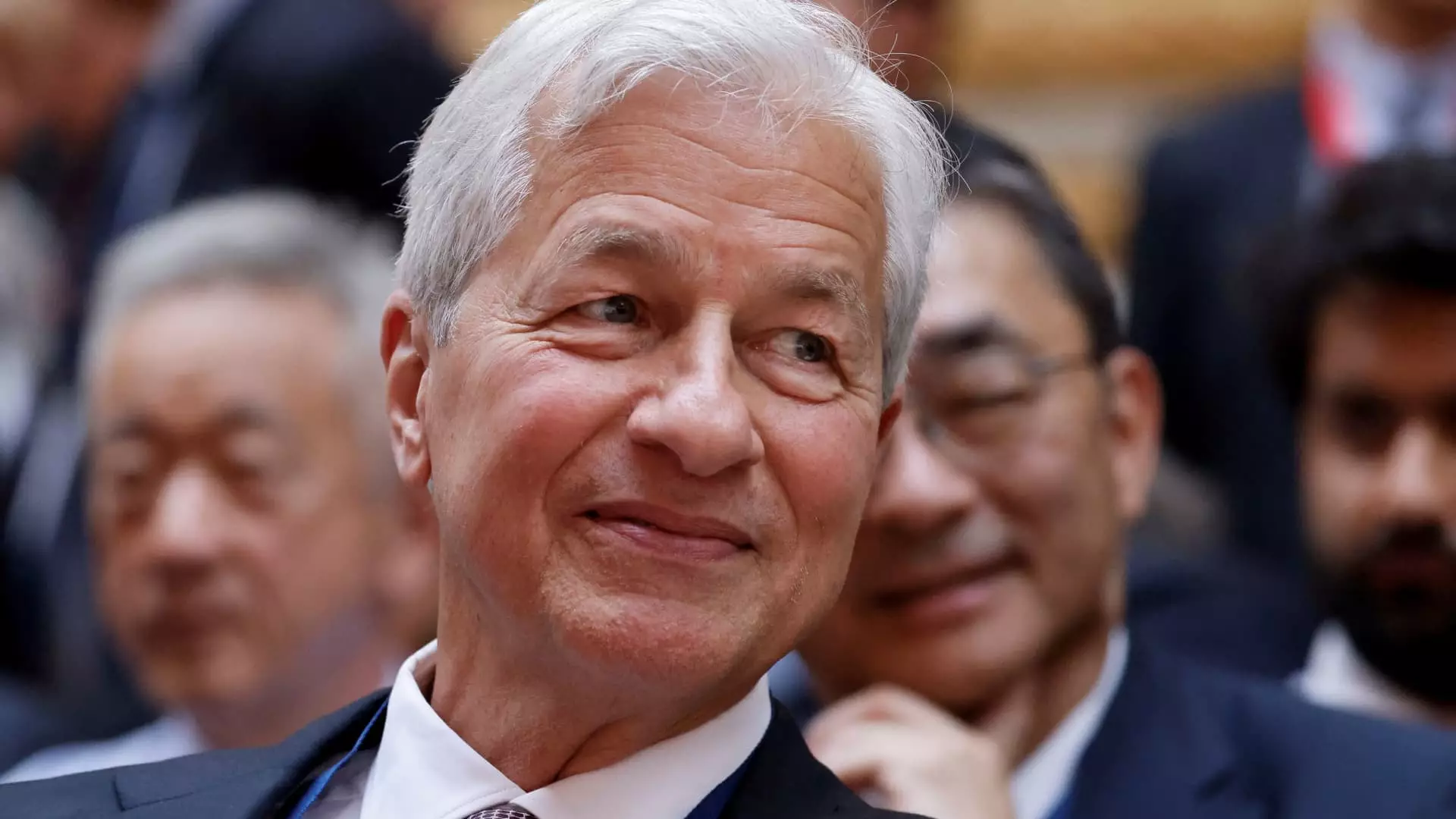JPMorgan Chase has emerged from a remarkable financial year, but along with its record profits, the bank faces unprecedented scrutiny regarding its capital management strategy. With an impressive excess capital estimated at around $35 billion, JPMorgan’s leadership, particularly CFO Jeremy Barnum, is advocating for increased share buybacks. This move seeks to prevent the bank’s capital reserve from ballooning further, emphasizing a proactive approach to managing its financial resources.
In the realm of finance, the term “high-class problem” often refers to situations that are enviable yet complex. For JPMorgan, this entails dealing with substantial amounts of excess capital that far exceed regulatory requirements. Barnum articulated the company’s desire to prevent this surplus from escalating, hinting at an urgent need for effective capital deployment. The crux of this strategy lies in redirecting the surplus into share repurchases, which can ideally bolster shareholder value without the risks associated with hasty investments or acquisitions.
Given the bank’s strong trajectory, the push for share buybacks resonates with investor desires for immediate value enhancement. Analysts and shareholders alike have pressed the bank for clarity on how it intends to handle this excess capital. For JPMorgan, the challenge not only involves utilizing their financial cushion efficiently but also balancing the expectations from stakeholders amid shifting market dynamics.
Regulatory Environment and Market Sentiment
The regulatory landscape plays a pivotal role in shaping JPMorgan’s capital management strategies. The impending Basel 3 rules initially imposed an expectation for banks to hold higher capital reserves, thereby prompting JPMorgan to stockpile its earnings for regulatory compliance. However, analysts speculate that a shift in regulatory stance under the new administration may alleviate some pressure, potentially allowing the bank greater flexibility in managing its capital base.
CEO Jamie Dimon previously expressed cautious sentiments towards aggressive stock buybacks when the bank’s stock price reached astronomical heights. His reluctance indicated a hesitance to invest heavily in shares when the bank’s valuation seemed inflated, highlighting a principle of financial prudence. The firm’s stock has appreciated significantly, exceeding previous valuations, which only complicates the decision-making process. Dimon’s insistence on disciplined capital allocation reflects a deep understanding of the cyclical nature of finance and investment.
The broader economic landscape looms large over JPMorgan’s capital strategy. Despite ongoing warnings of a potential economic downturn, the anticipated recession has yet to materialize. This places the bank in a state of preparation, with Barnum noting the need for a robust plan to navigate various scenarios. The current market climate features elevated asset prices that can obscure underlying risks, making strategic capital allocation essential for maintaining financial stability.
Analysts such as Charles Peabody emphasized the importance of caution and discipline in deploying excess capital. Should an economic downturn occur, the opportunity to leverage this surplus for competitive advantage may present itself, allowing JPMorgan to capture market share while rivals falter. This strategic foresight underscores the necessity of balancing immediate shareholder demands with long-term financial health.
JPMorgan Chase’s current situation exemplifies the delicate balancing act financial institutions must perform in managing excess capital. While share buybacks present an attractive option for returning value to shareholders, the bank’s leadership remains committed to prudent financial practices. As it navigates an uncertain economic landscape, JPMorgan’s strategy will likely continue to evolve, aiming for a measured approach that prioritizes both immediate gains and sustainable growth.
JPMorgan Chase’s response to its excess capital challenge reflects both a recognition of current market conditions and a preparation for future economic uncertainty. By maintaining discipline in capital allocation, the bank positions itself not merely as a passive participant in the market but as an active strategist poised to seize emerging opportunities.

